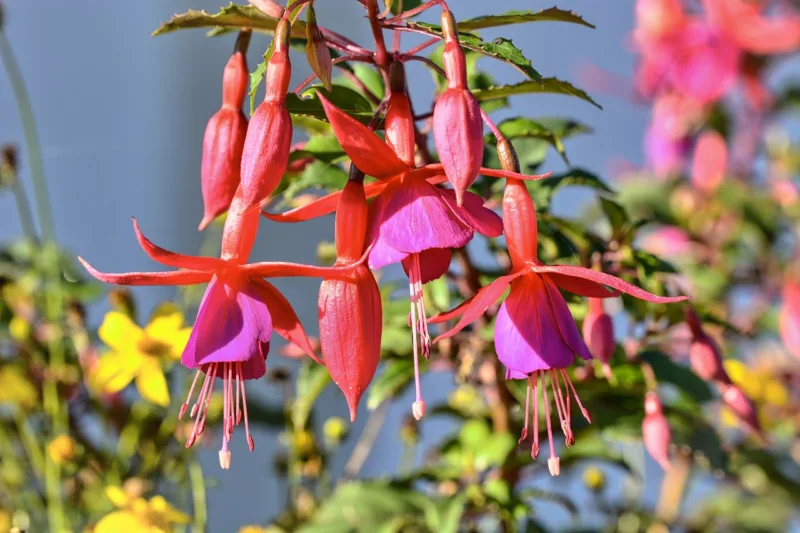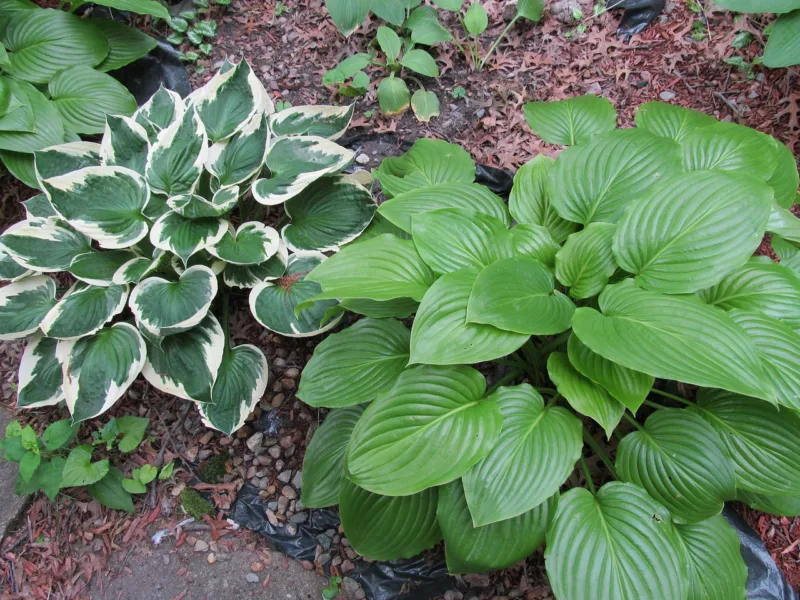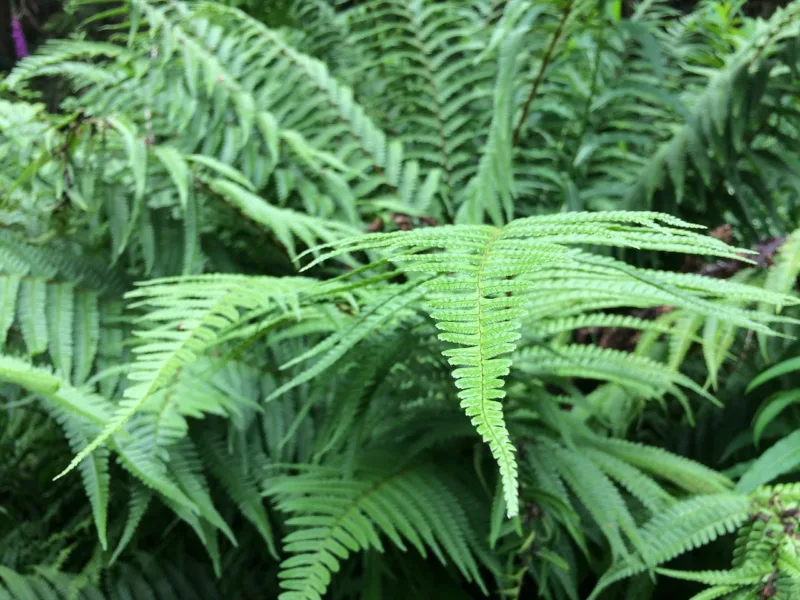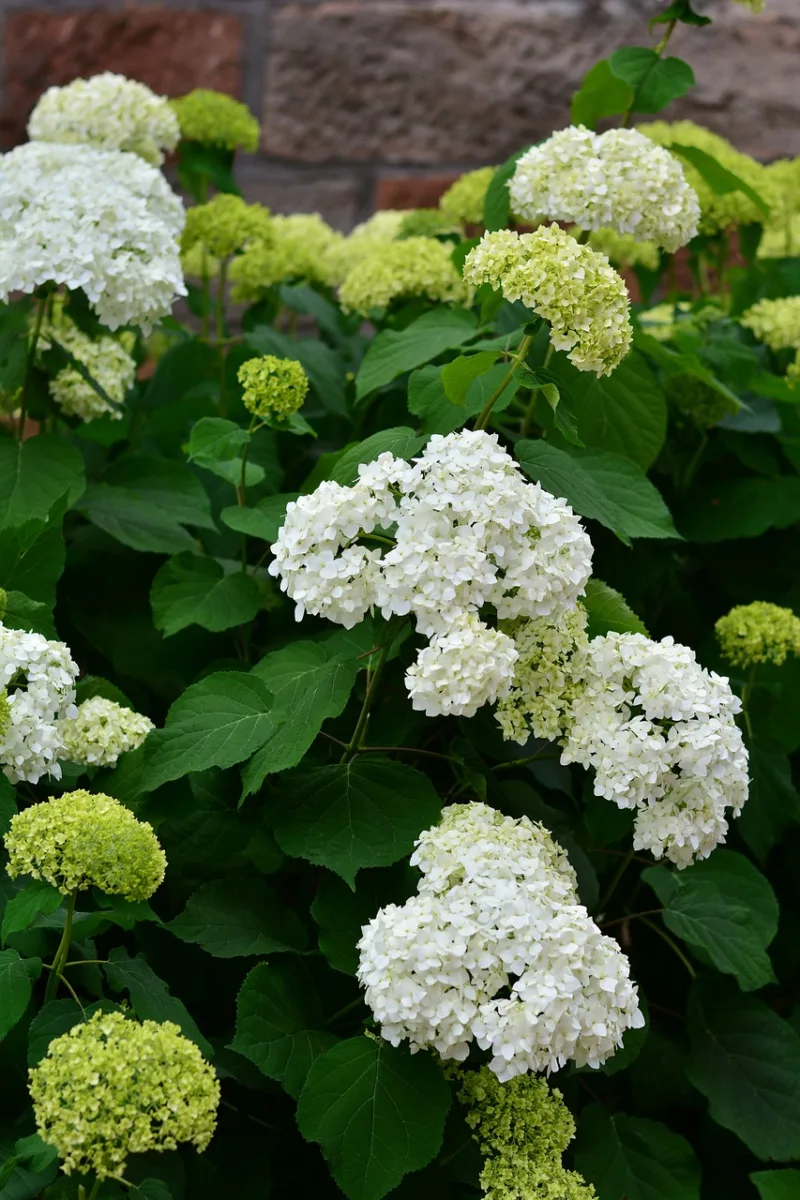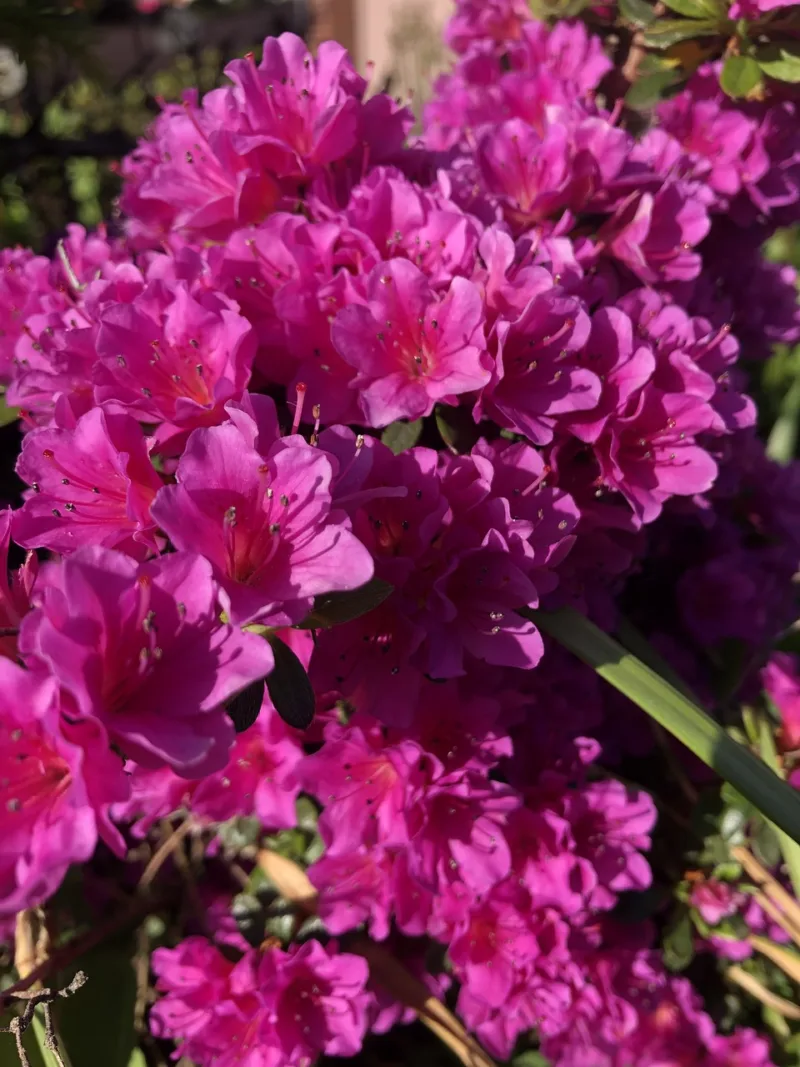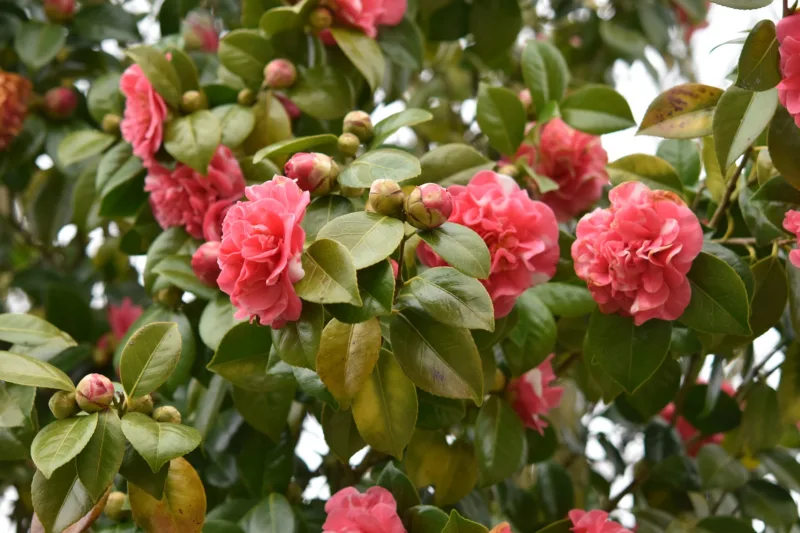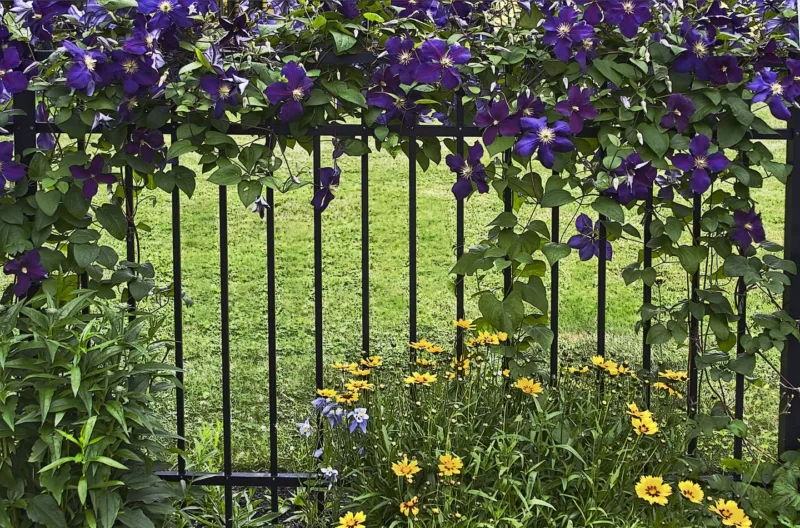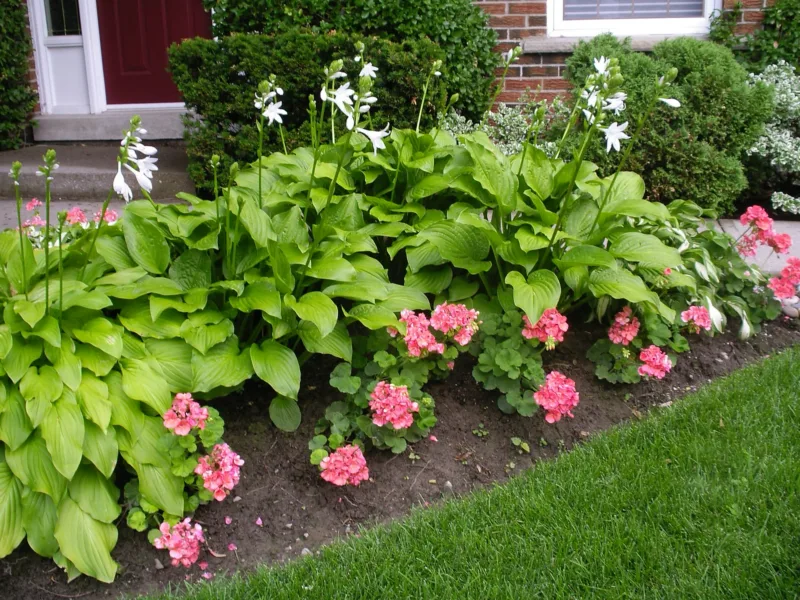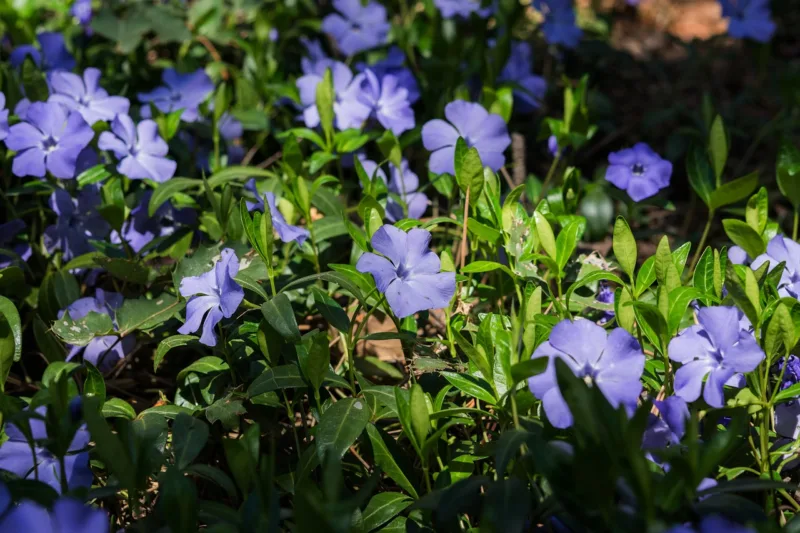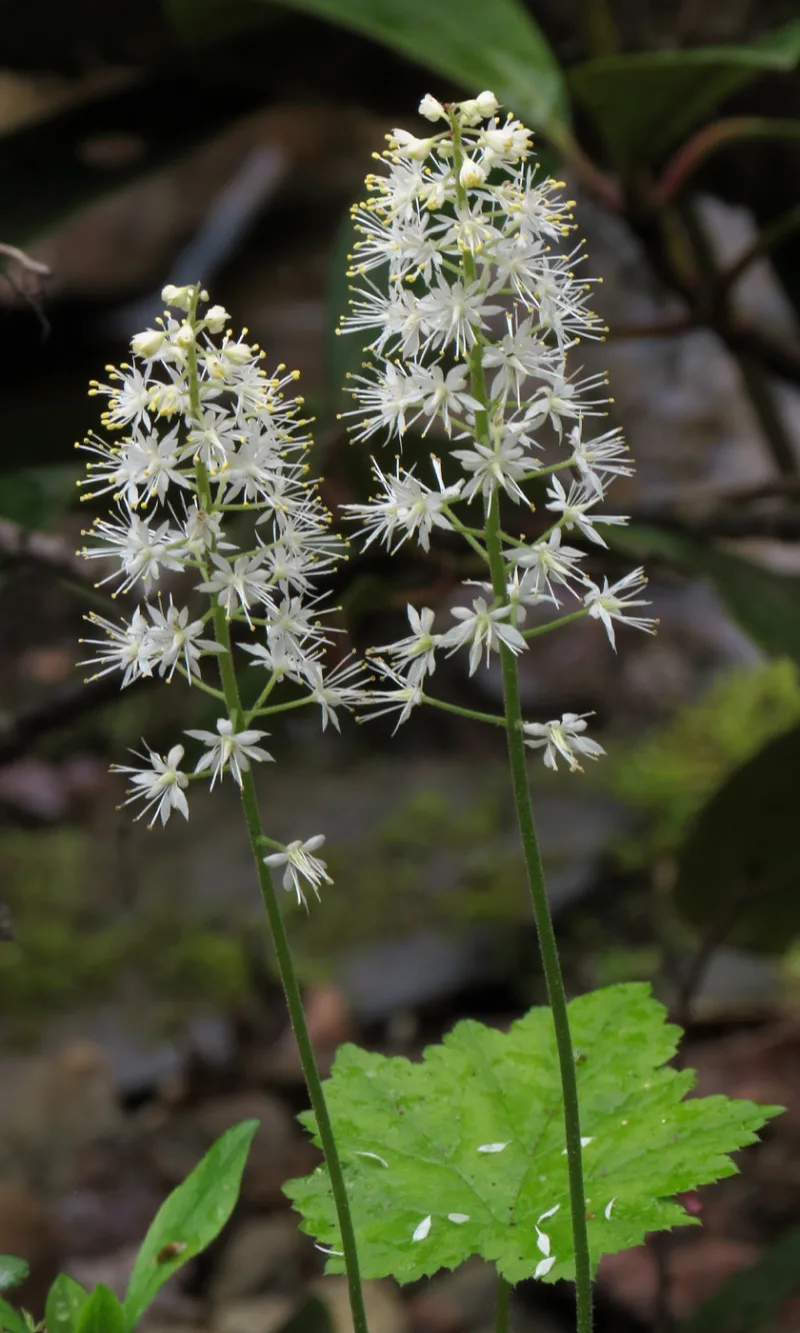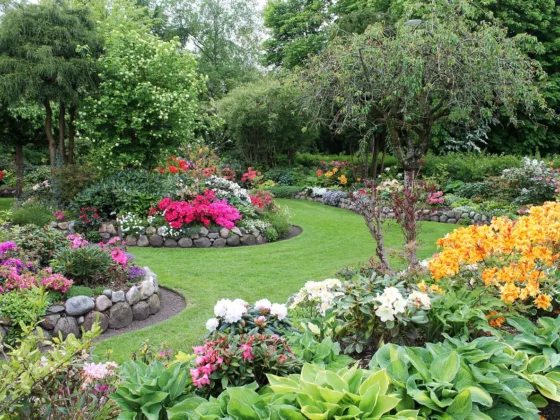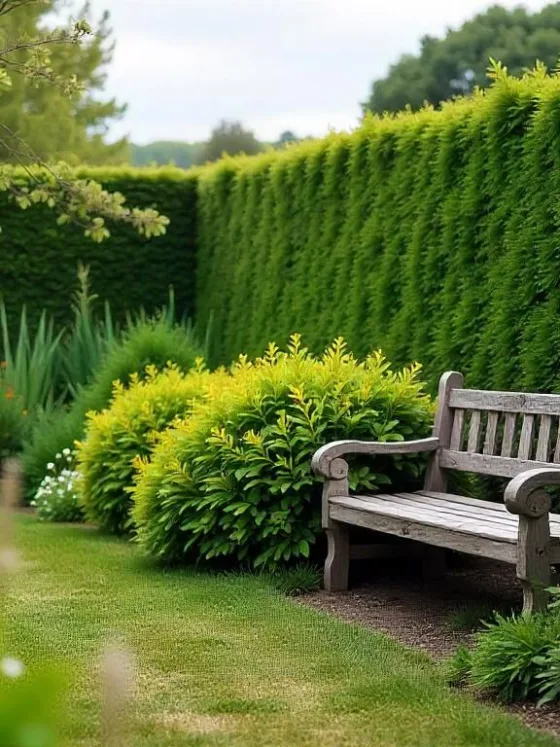Table of Contents Show
Shade is a common challenge for many gardeners, especially those who live in urban areas or have small outdoor spaces. However, shade doesn’t have to be a problem if you choose the right plants for your conditions.
There are many plants that can tolerate or even prefer shade, and they can add color, texture, and interest to your landscape. In this article, we will introduce you to some of the best plants for shade, from annuals and perennials to shrubs and vines.
Annuals for Shade
Annuals are plants that complete their life cycle in one year, meaning that they need to be replanted every season. Annuals are great for adding instant color and variety to your shade garden, and they can be grown in containers, hanging baskets, or beds and borders.
Some of the best annuals for shade are:
Impatiens
Impatiens is a genus of more than 1,000 species of flowering plants. They are widely distributed throughout the Northern Hemisphere and the tropics. Impatiens prefer humus-rich, moist, and well-drained soil. They grow wonderfully if both the container and potting medium have good drainage. Impatiens can grow anywhere between 6 and 30 inches tall.
These are one of the most popular shade-loving annuals, with their bright and cheerful flowers in shades of pink, red, white, purple, and orange. Impatiens can grow up to 2 feet tall and wide and bloom from spring to frost.
They prefer moist and well-drained soil and need regular watering and fertilizing. Impatiens do not require pruning or deadheading, as they have a natural shape and self-cleaning habit.
However, faded flowers and yellowing leaves should be removed to avoid fungal diseases. Impatiens flower best in full sun or part shade and are sheltered from winds as the stems can snap easily.
Here’s how to grow impatiens:
- Choose a location that receives partial to full shade. Impatiens prefer cooler temperatures and will wilt in hot, direct sunlight.
- Prepare the soil by adding compost or other organic matter to improve drainage and fertility.
- Plant impatiens in well-draining soil that is consistently moist but not waterlogged.
- Water impatiens regularly during dry spells to keep the soil consistently moist and prevent the plants from wilting.
- Fertilize impatiens with compost or a slow-release granular fertilizer at planting time. Use water-soluble fertilizer on your impatiens every two weeks through spring and summer.
- Pinch plants back if they become tall and leggy to encourage bushier growth.
Begonias
These are another favorite shade-loving annual, with their showy flowers and glossy foliage. Begonias come in many types and colors, from wax begonias with their rounded leaves and clusters of flowers to tuberous begonias with their large and ruffled blooms.
Begonias can grow up to 2 feet tall and wide and bloom from spring to fall. They prefer moist and well-drained soil and need regular watering and fertilizing.
Begonias do not require pruning or deadheading, but they may benefit from pinching back the stems to encourage bushy growth. Begonias flower best in partial shade or dappled shade and are sheltered from winds as the stems can break easily.
How to Grow Begonias
Begonias are beautiful plants that can be grown indoors or outdoors. Here are some general tips on how to grow begonias:
- Purchase tubers (bulbs) by mid-winter. Since begonias need to be planted in early spring, the best time to find a good selection is during the winter.
- Start the begonias indoors a month before the last frost.
- Plant them in small pots or flats.
- Place the trays or pots on a sunny windowsill and wait for them to sprout.
- Each begonia plant should be placed in its own hole, although these can be put close together. Cover the top of the root ball, bulb, or seeds with a few inches of soil/potting mixture. If you’re planting a small begonia plant, break apart the root ball a bit before placing it in the hole.
- Water the plant thoroughly and keep it moist but not waterlogged.
- Begonias enjoy porous, rich soil that is slightly acidic. Peat-based soils with plenty of organic matter are ideal.
Begonias for Shade
If you want to grow begonias for shade, here are some additional tips:
- Begonias are fairly easy plants to grow, provided they are planted in well-draining soil and a partly shade position.
- Keep soil moist, particularly during hot weather and if growing in a small pot or basket.
- A weekly feed during the growing period of liquid tomato fertilizer will encourage extra blooms.
- Grow begonias in peat-free, multi-purpose compost in dappled sunshine to partial shade.
- Plant tubers of tuberous begonias in spring.
- Only plant begonias outside in May, when no more frosts are forecast.
- Water regularly and feed weekly with a high potash fertilizer like tomato feed.
- Provide shelter from the hot afternoon sun.
Fuchsia
These are beautiful annuals for shade, with their elegant and pendulous flowers that attract hummingbirds and butterflies. Fuchsia flowers come in various colors and combinations, such as pink, purple, red, white, and bicolor.
Fuchsia can grow up to 3 feet tall and wide and bloom from spring to fall. They prefer moist and well-drained soil and need regular watering and fertilizing. Fuchsia do not require pruning or deadheading, but they may benefit from pinching back the stems to encourage more blooms.
Fuchsia flowers best in partial shade or dappled shade and are sheltered from winds as the stems can bend easily.
How to Grow Fuchsia in Shade
Fuchsias are beautiful plants that can be grown in containers or in the ground. Here are some tips on how to grow fuchsia:
- Fuchsias don’t like temperature extremes and will require protection from the hot midday and afternoon sun.
- Fuchsias aren’t rapid growers so their fertilizer requirements aren’t all that high.
- Remove any spent flowers to encourage further blooms.
- Fuchsias can recover from a harsh prune. It is best to give them a light prune just after flowering to promote bushy growth.
You can also grow fuchsia from seed by mixing peat moss, potting soil, and vermiculite in an appropriate container for indoor seedlings. Spread the seeds across the mixture, press them down lightly, and cover them with a thin layer of potting soil.
Fuchsias can grow in shade but not all varieties are suitable for growing in the shade. Here are some tips on how to grow fuchsia in shade:
- Choose the right variety. Look for varieties that are specifically labeled as suitable for growing in the shade.
- Provide sufficient moisture. Fuchsias need consistently moist soil to thrive, especially in shadier spots.
- Give them enough air circulation. Good air circulation is important for fuchsias, especially in the shade.
- Give them plenty of fertilizer.
- Prune them regularly.
Fuchsia needs bright, indirect light, so choose a spot that is protected from direct sunlight but still gets some sun in the morning or evening.
Perennials for Shade
Perennials are plants that live for more than two years, meaning that they don’t need to be replanted every season. Perennials are great for creating a long-lasting and low-maintenance shade garden, as they can provide structure, texture, and interest throughout the year. Some of the best perennials for shade are:
Hostas
These are one of the most popular shade-loving perennials, valued for their lush and dense foliage and large decorative leaves. Hostas come in many shapes, sizes, colors, and patterns, from the blue-green leaves of ‘Halcyon’, to the variegated leaves of ‘Patriot’, to the yellow leaves of ‘Sum and Substance’.
Hostas can grow up to 4 feet tall and wide and bloom in summer with spikes of lavender or white flowers. They prefer moist and well-drained soil and need regular watering and fertilizing.
How to Grow Hostas in Shade
Hostas are shade-loving plants that are easy to grow and care for. Here are some tips on how to grow hostas in shade:
- Hostas prefer well-draining soil that is rich in organic matter. Before planting, loosen the soil around a foot deep and add compost or other organic matter to improve the soil.
- Grow hostas in moist, fertile soil in light or partial shade.
- Hostas can survive in full shade, but most varieties grow best when they receive dappled sun for a few hours each day.
- Protect hostas from slugs and snails by using slug bait or copper strips around the plants.
- Mulch annually with well-rotted manure, compost, or leaf mold and divide congested clumps every three to five years.
How to Propagate Hostas
There are several ways to propagate hostas:
- Dividing: This is the most popular method of propagating hostas. When the crown of the hosta reaches at least 1 foot across, dig it up and divide it into two pieces. Then plant them separately in the soil and they will eventually become full-grown plants.
- Generative propagation: One of the most interesting ways to propagate hostas is by sowing seeds. Many collectors around the world use this method to create new varieties of hostas.
- Propagation by leaves: You can propagate hostas by taking leaf cuttings. Cut a leaf from the plant and place it in a pot filled with potting soil. Keep the soil moist and in a warm location until roots form.
Common Pests and Diseases that Affect Hostas
Hostas are susceptible to a variety of pests and diseases. Some of the most common diseases of hostas include chlorosis, which is manifested by yellowing of the leaves except for the leaf veins; drawstring effect, where the green part in the center of the leaf grows faster than the edge of the leaf; grauschimmel (Botrytis); nutrient deficiency; and virus problem.
Some common pests that affect hostas include slugs and snails, black vine weevil, aphids, blister and leaf beetles, and cutworms. Sooty mold is another common hosta disease that is often found on hostas planted under trees affected with sap-sucking pests such as scale or aphids.
Hostas are generally hardy plants that are not susceptible to many pests or diseases. However, here are some common pests and diseases that affect hostas:
- Chlorosis: This is one of the most common diseases of hostas. It is manifested by yellowing of the leaves, with the exception of the leaf veins.
- Drawstring Effect: With the so-called drawstring effect, the green part in the center of the leaf grows faster than the edge of the leaf.
- Grauschimmel (Botrytis): This is a fungal disease that causes gray mold on leaves and flowers.
- Nutrient deficiency: Hostas can suffer from nutrient deficiencies if they are not grown in fertile soil.
- Snails: Snails can damage hostas by eating holes in the leaves.
- Vine weevil: Vine weevils can damage hostas by eating notches out of the edges of the leaves.
- Nematodes – leaflets: Leaf nematodes can cause brown spots and stripes on hosta leaves.
- Virus problem: Hostas can be infected with viruses such as tobacco rattle virus (TRV) and hosta virus X (HVX).
Ferns
These are another beautiful and diverse shade-loving perennial grown for their foliage. Ferns have delicate and feathery fronds that add texture and contrast to your shade garden.
Ferns come in many types and sizes, from the evergreen Christmas fern that grows up to 2 feet tall, to the deciduous ostrich fern that grows up to 6 feet tall. Ferns prefer moist and well-drained soil and need regular watering.
How to Grow Ferns in Shade
Ferns are great plants for shady areas. Here are some tips on how to grow ferns in shade:
- Ferns prefer well-drained soil that is rich in organic matter. You can mix compost or other organic matter into the soil before planting. This will help the soil retain moisture and provide nutrients for the ferns.
- Ferns should be planted in partial or full shade. They need protection from the afternoon sun to prevent their fronds from drying out or scorching. If you’re planting ferns in a sunny area, make sure they are protected by a canopy of trees or other plants.
- Water your ferns well throughout their first growing season. Once established, many ferns can become drought-tolerant. However, they still need regular watering during dry spells.
- Ferns thrive in areas with light or dappled shade. Few fern species tolerate full exposure to the sun. They also prefer areas that are sheltered from strong winds. Overhead protection from a canopy of trees or being placed by shrubs will increase the humidity, which helps them thrive.
- Some popular fern species include Boston fern, maidenhair fern, and bird’s nest fern.
Hydrangeas
These are stunning perennials for shade, with their large and showy flower heads that change color depending on the soil pH. Hydrangeas are a genus of more than 75 species of flowering plants native to Asia and the Americas.
They have commonly named the hortensia. Most are shrubs 1–3 m (3 ft 3 in – 9 ft 10 in) tall, but some are small trees, and others lianas reaching up to 30 m (100 ft) by climbing
There are different types of hydrangeas that can grow in shade, such as mophead, lacecap, mountain, climbing, and oakleaf hydrangeas. Some of them are more shade-tolerant than others, like oakleaf and climbing hydrangeas.
Some of them have been bred to produce large and colorful blooms, like Endless Summer, Let’s Dance, Tuff Stuff, Annabelle, Invincibelle, and Incrediball. Hydrangeas for shade usually prefer moist soil and protection from the afternoon sun.
How to Plant Hydrangeas
Here are some steps to plant hydrangeas:
- Gently remove the hydrangea from its container and inspect the root ball, snipping off any dead or rotting parts and teasing free the roots if the plant is especially root bound.
- Dig a hole as deep as the root ball and 2 to 3 times as wide.
- Set the plant in the hole and fill it half full with soil.
- Water thoroughly once again.
Hydrangeas do best in moist soil, so if your soil is light, bulk it up with moisture-retaining organic matter such as well-rotted manure or compost before planting. Water the plant well an hour or so before you plant it.
Because hydrangeas prefer to grow in partial shade, they usually do best when planted in a north- or east-facing site, where winter temperatures remain somewhat constant. Avoid planting on the south and west side of your property where the warmth of the winter sun could cause buds to swell prematurely and become vulnerable to cold snaps.
Read Also:
Shrubs for Shade
Shrubs are woody plants that can provide structure, height, and interest to your shade garden. Shrubs can be evergreen or deciduous, and some of them can produce flowers, berries, or colorful foliage. Some of the best shrubs for shade are:
Rhododendron
These are spectacular shrubs for shade, with their large and showy flower clusters that come in various colors, such as pink, purple, red, white, and yellow. Rhododendrons can grow up to 15 feet tall and wide and bloom in spring or summer.
They prefer moist and well-drained soil and need regular watering and fertilizing. Rhododendron flowers best in partial shade or dappled shade and are sheltered from winds as the stems can snap easily.
How to Grow Rhododendron in Shade
Rhododendrons are beautiful plants that can thrive in partial shade. Here are some tips on how to grow Rhododendrons in shade:
- Rhododendrons prefer humus-rich acidic soil. You can use a test kit to measure the pH of your soil and check neighboring gardens to see if Rhododendrons or other acid-loving plants grow well in your area. If your soil is not acidic enough, you can add sulfur or iron sulfate to lower the pH.
- Plant Rhododendrons in partial shade or full sun. Many Rhododendrons suit planting at the edge of a woodland border or shady area. Dwarf alpine Rhododendrons work well in rock gardens and other small spaces.
- Provide light shade, especially in the afternoon. Plant Rhododendrons in the dappled light beneath tall pines and hardwoods. Don’t plant in deep shade or the plants won’t bloom.
- Mulch Rhododendrons annually and water well with rainwater. Avoid using tap water if possible as it can contain high levels of chlorine and other chemicals that can damage the plant.
- Prune your Rhododendron after it has finished blooming. Remove any dead or diseased branches and shape the plant as desired.
- Fertilize your Rhododendron with a slow-release fertilizer that is formulated for acid-loving plants. Apply the fertilizer in early spring before new growth appears.
- Propagate your Rhododendron by taking stem cuttings in late summer or early fall. Dip the cuttings in rooting hormone and plant them in a mixture of peat moss and perlite.
- Some common problems with growing Rhododendrons include root rot, lace bugs, and powdery mildew.
- The best time to plant Rhododendrons is in the fall or early spring when the soil is moist but not waterlogged.
Azalea
These are closely related to rhododendron, but they are smaller and more compact shrubs for shade. Azalea has smaller and more delicate flowers that come in various colors, such as pink, purple, red, white, and orange.
Azaleas can grow up to 6 feet tall and wide and bloom in spring or summer. They prefer moist and well-drained soil and need regular watering and fertilizing. Azalea flowers are best in partial shade or dappled shade and are sheltered from winds as the stems can break easily.
Camellia
These are elegant shrubs for shade, with their glossy evergreen leaves and large and ruffled flowers that come in various colors, such as pink, red, white, and bicolor.
Camellia can grow up to 12 feet tall and wide and bloom in fall or winter. They prefer moist and well-drained soil and need regular watering and fertilizing. Camellia flowers are best in partial shade or dappled shade and are sheltered from winds as the stems can bend easily.
Vines for Shade
Vines are plants that can climb or trail along structures, such as trellises, fences, walls, or arbors. Vines can add vertical interest and cover to your shade garden, and some of them can produce flowers, berries, or colorful foliage. Some of the best vines for shade are:
Climbing Hydrangea
This is one of the most shade-tolerant vines available and will do better than surviving in the shade. This vine sports glossy evergreen leaves and produces showy clusters of white flowers in late spring or early summer.
Climbing hydrangea can grow up to 50 feet long and attach to surfaces with aerial roots. It prefers moist and well-drained soil and needs regular watering and fertilizing.
Clematis
This is a diverse group of vines that come in many shapes, sizes, colors, and blooming times. Clematis can grow up to 30 feet long and produce large and showy flowers in various colors, such as purple, pink, blue, white, and red.
Clematis prefers moist and well-drained soil and needs regular watering and fertilizing. Clematis flower best in partial shade or dappled shade and need support to climb on.
Jade Vine
This is a rare and exotic vine that produces stunning clusters of turquoise-green flowers that resemble jade. Jade vines can grow up to 75 feet long and bloom from winter to spring.
It prefers moist and well-drained soil and needs regular watering and fertilizing. Jade vine flowers are best in partial shade or dappled shade and need support to climb on.
Ground Covers for Shade
Ground covers are low-growing plants that spread over the soil and form a dense mat. Ground covers can help to prevent soil erosion, suppress weeds, retain moisture, and add color and texture to your shade garden. Some of the best ground covers for shade are:
Hosta
We have already mentioned the hosta as a perennial for shade, but it can also serve as a ground cover for shade. Hosta has large and attractive leaves that come in various colors, shapes, and patterns.
Hosta can grow up to 4 feet tall and wide and produce spikes of lavender or white flowers in summer. Hosta prefers moist and well-drained soil and needs regular watering and fertilizing. Hosta can tolerate full shade to part shade and is resistant to deer and rabbits.
Periwinkle
This is an evergreen ground cover for the shade that has glossy green leaves and star-shaped blue flowers. Periwinkle can grow up to 6 inches tall and spread indefinitely by rooting stems.
Periwinkle blooms from spring to fall and prefers moist and well-drained soil. Periwinkle can tolerate full shade to full sun and is drought-tolerant once established.
Foamflower
This is a native ground cover for a shade that has heart-shaped green leaves and spikes of white or pink flowers. Foamflowers can grow up to 12 inches tall and wide and bloom from spring to early summer.
Foamflower prefers moist and well-drained soil and needs regular watering. Foamflower can tolerate full shade to part shade and attracts hummingbirds and butterflies.
Summary
This article introduces some of the best plants for shade, including annuals, perennials, shrubs, vines, and ground covers. These plants can thrive in low-light conditions and add color, texture, and interest to your landscape. Some of the plants mentioned are impatiens, begonias, fuchsia, hostas, ferns, rhododendron, azalea, camellia, climbing hydrangea, clematis, jade vine, periwinkle, and foamflower.



